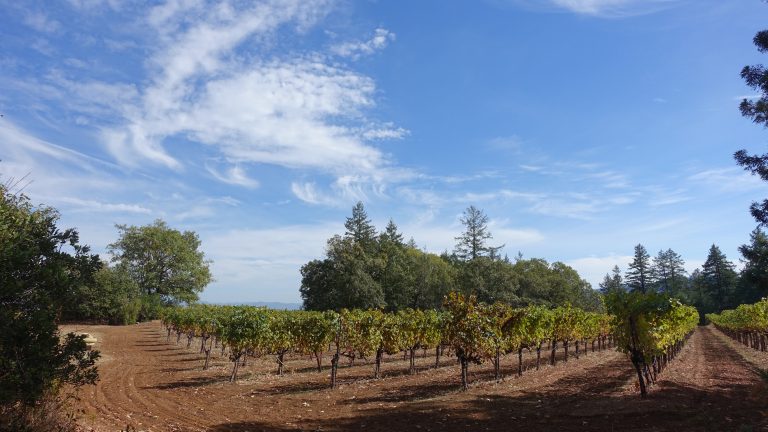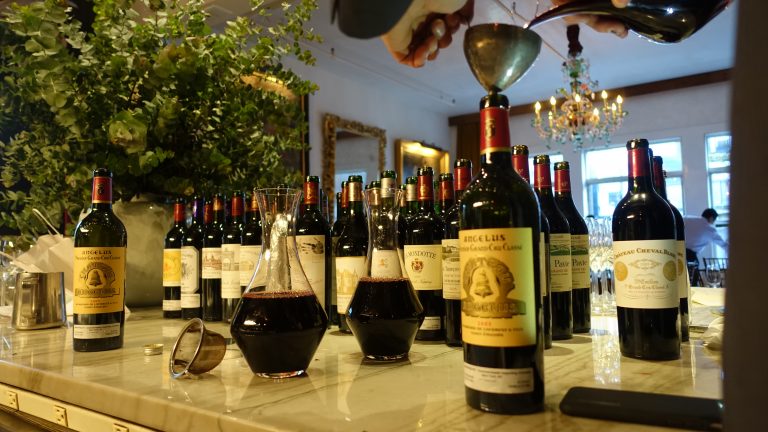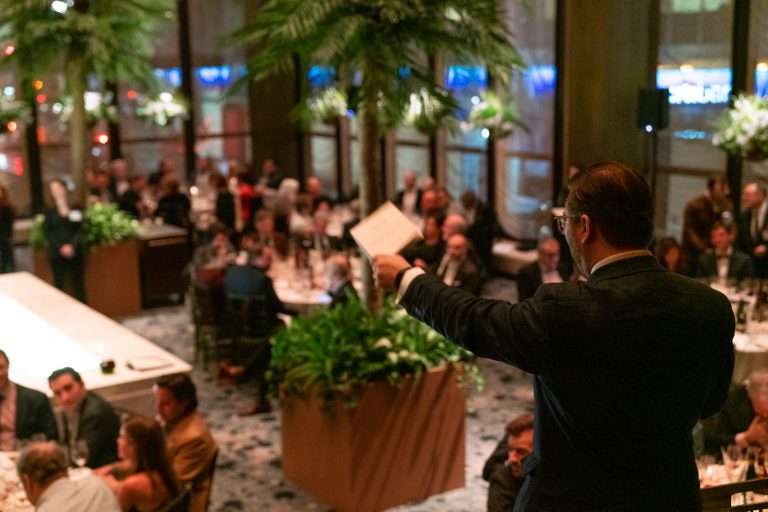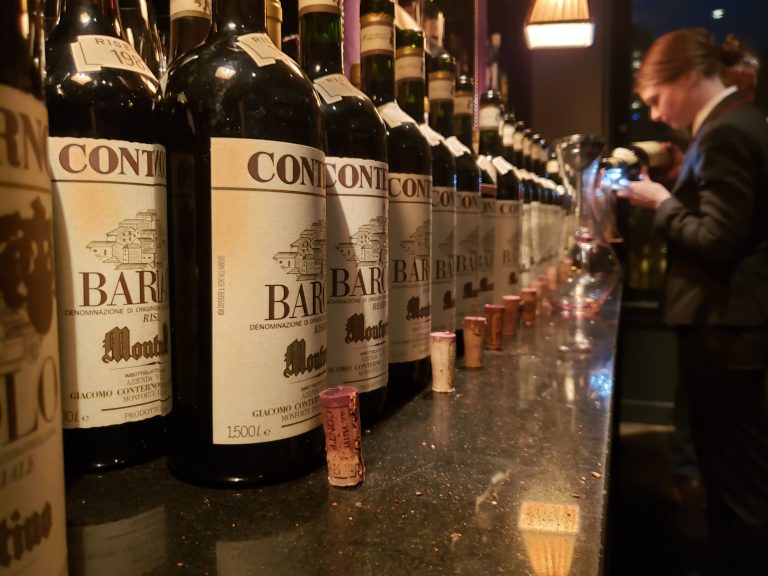WHO: James Forsyth
WHAT: A wine connoisseur and executive vice president of Vinous, launched alongside famed wine critic Antonio Galloni. Vinous holds a leadership position in wine media and information.
WOWS: James is a recipient of the WSET/IWSC Future 50 Award for his significant contributions within the wine industry.
HOW TO PICK THE PERFECT WINE FOR YOUR PALETTE…

Wine is both subject to objective and subjective elements. From the objective standpoint, just the way food should not be burned, wine is similar. There are countless types of wine, but within these types there are some wines that are made better than others. Therefore, the starting point should be to look for wines of a sufficient quality, irrespective of type. You may love red wine from Burgundy, which is made with the grape Pinot Noir, but a badly made Pinot will bring no pleasure. The subjective side of wine comes down to taste. Some may like their food spicy, others will prefer it milder. Both are reasonable. To choose the wines that are perfect for your palette, you first need to know your palette. You should explore a range of wines and begin to build a picture of your preferences. Over time you will start to get a sense of what wines are perfect for you. The
answer may be that a great many different types of wines are ideal, and that you appreciate them for their own merits. Or you may be drawn to particular grapes or styles. There is no wrong answer, as long as the wines you are drinking are of sufficient quality.
Conclusion: Quality over everything else.
HOW TO DRINK WINE THE RIGHT WAY…
DON’T overfill your glass. Wine isn’t water and the glass isn’t just there to hold the wine. Instead wine should fill only roughly the bottom third of the glass. With this size pour, the glass can help enhance the aromatics of the wine. DO hold your wine glass from the stem and not the bowl. It is classier, won’t leave fingerprints on the glass, and you won’t end up warming the wine with your hand. DO smell the aroma of the wine before taking your first sip. Smell is the nuanced sense with the ability to register and recall countless aromas. Smell is more sophisticated than the five basic tastes, so give it a chance. DO be aware that wine is there to be enjoyed rather than to quench thirst. Therefore take small sips versus big gulps. Good wine is complicated, so give it time to intrigue you.
Conclusion: Take time, smell before you sip and hold your glass like you have some class.
THE TRICKS TO CHOOSING A GOOD WINE…

With so many thousands of wines available, choosing a bottle can be difficult. According to some surveys, the vast majority of wines are chosen because of the label! However, that approach is not recommended. The contents of the bottle is what counts, of course. But you may enjoy different wines at different times. So when you’re choosing a wine, start by asking yourself the most basic question: what sort of wine do you want to drink? A fruity or structured red, or an aromatic or tropical white? This question informs where in a wine store or on the wine list you should start looking. At this point, the number one rule kicks in—you are best off focussing on the producer first. The reason is that a quality minded producer will make a good wine across their entire range. But the challenge with this rule is how is one to know whether a producer is good or not, if you haven’t heard of them. That’s where publications and apps like Vinous or Delectable can be helpful. Critics at Vinous are famous for being the greatest experts in the world for the regions they cover. Each taste around 5000 wines a year, and offer their trusted, independent perspective on these wines on the website for subscribers. As with anything, someone knows more than you. The good news is that the people who know the most about wine share their views online for quick and easy reference.
Conclusion: Mood and wine producer take precedence over all else. To know more, listen to the experts!
BUILDING A GREAT COLLECTION OF WINE AND STORING IT RIGHT IS JUST AS IMPORTANT AS DRINKING IT…

There are a few rules that you can follow to build a wine cellar. Firstly, when you are building your cellar, choose a third of the wines to drink within the next five years—there’s not much point to buying wine if you can’t enjoy any of it. Make the next third of the wines hit maturity in 5-10 years. Time will fly by and then you’ll have some lovely wines that are ready to drink. The final third should be longer aged wines. Barolo, Bordeaux and Burgundy are great choices. You might want to drink some of them younger but they’ll create the bedrock of your cellar for years to come. Secondly, go for the classics: good producers from established regions. Combine these two rules and you’ll have a great collection of wines that will enable you to drink well for years to come. That is as long as the wines are stored well. Wine is a natural product and heat can damage it. A wine stored well might last for decades, maturing and improving with age. However, a few hours of extreme heat can damage a wine forever. Ideally wine should be stored at 12-18 degrees C. If you’re building a wine collection, it is worth making sure that you can store your wines appropriately.
Conclusion: Drink some, age the rest and enjoy later. But store in appropriate temperatures to ensure its life. Heat is an instant killer.
“I like a great many different sorts of wine, but my favourite is Barolo. This is a wine made from Nebbiolo from the Barolo region in Piedmont, Italy. Nebbiolo is a wonderful grape. In the Vinous grape guide it is described as having “extraordinary aromatic presence, finely sculpted fruit and firm beams of tannin are the backbone of Nebbiolo-based wines. Rose petal, tar, cherry, plum, licorice are some of the many signatures. The best wines are capable of extraordinary development in bottle.” In short, good Barolos have great structure but aren’t remotely heavy. Also, the interesting thing about Barolos is that most of the reference point wines come from single vineyards, and these particular sites can be tasted in the wines. This means that the more you get to know the wines and understand the sites from which the wines emerge, the more there is to learn.”
THE WINE “RULES” THAT HAVE BEEN MADE TO BE BROKEN…
1. Drink Champagne from flutes.
Wrong: Champagne should be enjoyed from a normal white wine glass, not flutes. Champagne, like any other wine, can display nuanced aromatics. Flutes restrict this important part of the wine.
2. Serve red wine warm.
Wrong: the ideal temperature for red wine is actually pretty cool, cellar temperature. If you’re tasting a wine and want it to be warmer, you can warm the wine in your hands. Serve a wine too warm and you’ll be hard pressed to cool it down.
3. Only drink white wine with fish.
Wrong: don’t think in terms of red or white, fish or meat, but rather what each is like. For example, salmon is oily and rich. Pinot Noir is light and bright. A great combination to have together.
Conclusion: Don’t follow rumoured trends, understand facts.
FOOD AND WINE PAIRING ADVICE…
There are essentially two ways to approach pairing food with wine. The first is to choose wines that complement food. In other words choose a wine that is very different to the food, but where the combination is made better. For example, the spice of an aromatic curry is complemented by the sweetness of a Riesling.The second is to choose a wine that is congruent to a dish. In this instance, the wine has similar attributes to the food. A rich stew will go nicely with a fruity Syrah.
Conclusion: Study the differences and similarities between the food you eat and the wine you intend to drink and combine appropriately.
TO NAVIGATE THE WORLD OF WINES YOU NEED A FEW THINGS…

1. A trusted source of information. Subscribers to Vinous can look up 300,000 wine reviews and read articles on all the latest vintages from all the major wine regions. Having the expertise of the most trusted wine critics in the world at your fingertips means that you will only make good wine choices, while learning about the context and background that make wine so interesting.
2. A good wine retailer or wine merchant. Ideally the merchant should be one with whom you can build a good relationship over time. This will help you get better service and better access to allocated wines.
3. Like minded people with whom to share your wines. Wine is social and has endless possibilities for exploration. Take this journey with others.
Conclusion: Wine is always had better in good company, with the right information by your side and a good retailer to source from.
All we have to say now is cheers!

